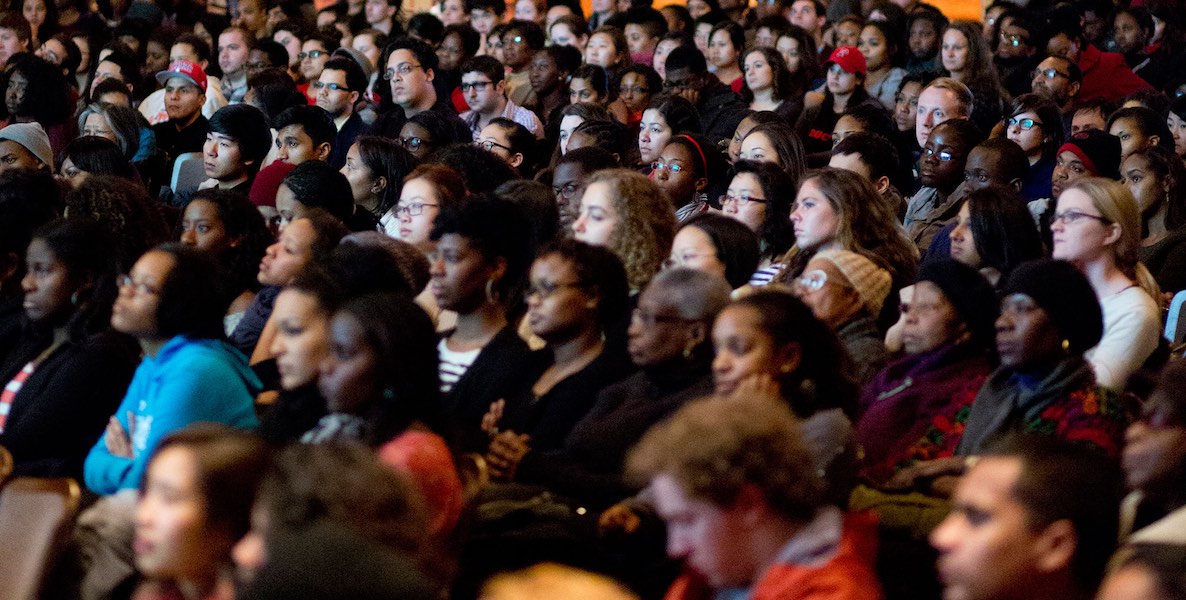Scientists in disparate fields don’t often come to the same conclusion about a subject. But they do agree on one thing: That many of our common assumptions about race are wrong.
That’s because “race,” in scientific terms, doesn’t exist. But that hasn’t stopped the misconceptions around race from penetrating into society.
How did the concept of race originate? Does it have any scientific validity? Is there a connection between patterns of violence and race? What do evolution, diversity and genes have to do with race? These are just a few questions that will be addressed by experts this fall at the University of Pennsylvania Museum of Archaeology and Anthropology’s “Science and Race: History, Use and Abuse” panels. The Public Classroom Series, held every other Wednesday from September 21st to November 16th, are open to the general public both at the museum and through live streaming.
The series centers around an exhibit of the Samuel Morton Collection—over 1,000 skulls collected from around the world in the 1800s—that laid the groundwork for “scientific racism.” A Philadelphian who was a cofounder of the Pennsylvania College of Medicine, Morton claimed that the size of a skull determined both brain size and intellect—with Caucasians at the top of the heap, and black people at the bottom. He also argued that the races developed separately from the start of humanity, not that they originated from one line.
Kate Quinn, Penn Museum’s Director of Exhibitions and Public Programs, says multiple focus groups for the exhibit found that visitors were uncomfortable just standing in a room surrounded by skulls. So, over the last six years, the museum developed the companion series, which will use the skulls and other pieces of the collection to disprove Morton’s conclusions.
“The implications that Dr. Morton put forth are really complicated,” Quinn said. “We know that even to say that ‘race does not exist’ from a scientific perspective is met with such resistance in some ways, because race does exist, of course, and the implications of it are real and we live it every day.”
The panel, with speakers from Penn and other acclaimed universities, gives the public a chance to take an Ivy League level class, free of charge. About 750 people can attend in person. Penn students will also be putting together a documentary to screen for middle school aged and higher students. Sessions are intended to be real courses, without the high cost of textbooks: Attendees will receive workbooks to take home with them and apply the information they’re learning to their own communities, Quinn says.
“We notice race because we’ve been socially trained to mark difference in racial terms,” professor of anthropology and advisor for the Penn Museum Deborah Thomas says. “It could be ear size that divided people, people with big ears had power over those with little ears. It’s arbitrary what the vector of difference is.”
Panelists come from a diverse background both intellectually and physically: each session will be presented through the lenses of anthropology, biology, genetics, sociology, philosophy and law. They include Claudine Cohen of Ecole de Hautes Etudes en Sciences Sociales in Paris, Jay Kaufman of McGill Centre on Populations Dynamics, Sarah Tishkoff of University of Pennsylvania’s genetics and biology department, Amade M’charek of the University of Amsterdam and Penn Law’s associate dean and executive director in anthropology and African studies, Christen Smith.
“We notice race because we’ve been socially trained to mark difference in racial terms,” professor of anthropology and advisor for the Penn Museum Deborah Thomas says. “It could be ear size that divided people, people with big ears had power over those with little ears. It’s arbitrary what the vector of difference is.”
The first session on Wednesday, led by WHYY’s “First” reporter Nichelle McKelvey-Polston, will discuss just that: dismissing the scientific “validity” of the concept of race and how it originated throughout the world. The modern concept of race is based upon simply skin pigmentation and the interactions of people over the past millennia, Thomas says.
“What people mean when they say race is a social construction is that it doesn’t have a basis in biology,” Thomas says. “There’s no gene for blackness.”
Later sessions include: “Biomedicine and Race,” dealing with racial backgrounds in healthcare; “Genetics and Race,” delving into how evolution and genes play into race; “Geography, Culture and Race,” exploring ancestral connections to race; and the final session, “Violence and Race,” moderated by WURD President and General Manager Sara Lomax-Reese searching to see if there is a pattern between violence and race.
Quinn says at least five local churches have already said they will be watching the livestream with their congregations, as well as at least one community center. The hope, she says, is that these sessions create a deeper understanding of what the idea of race means in our society.
“If we think that certain things are biologically caused by race or that certain races have particular cultural traits then it means that we can say things like ‘Asian people have a culture of submission’ or ‘Black people have a culture of violence,’” Thomas said. “It means that we don’t understand anything about the historical and structural and systemic bases of what among races is what is actually causing issues in the world, issues between people.”
Header photo by Steve Minicola for University of Pennsylvania



